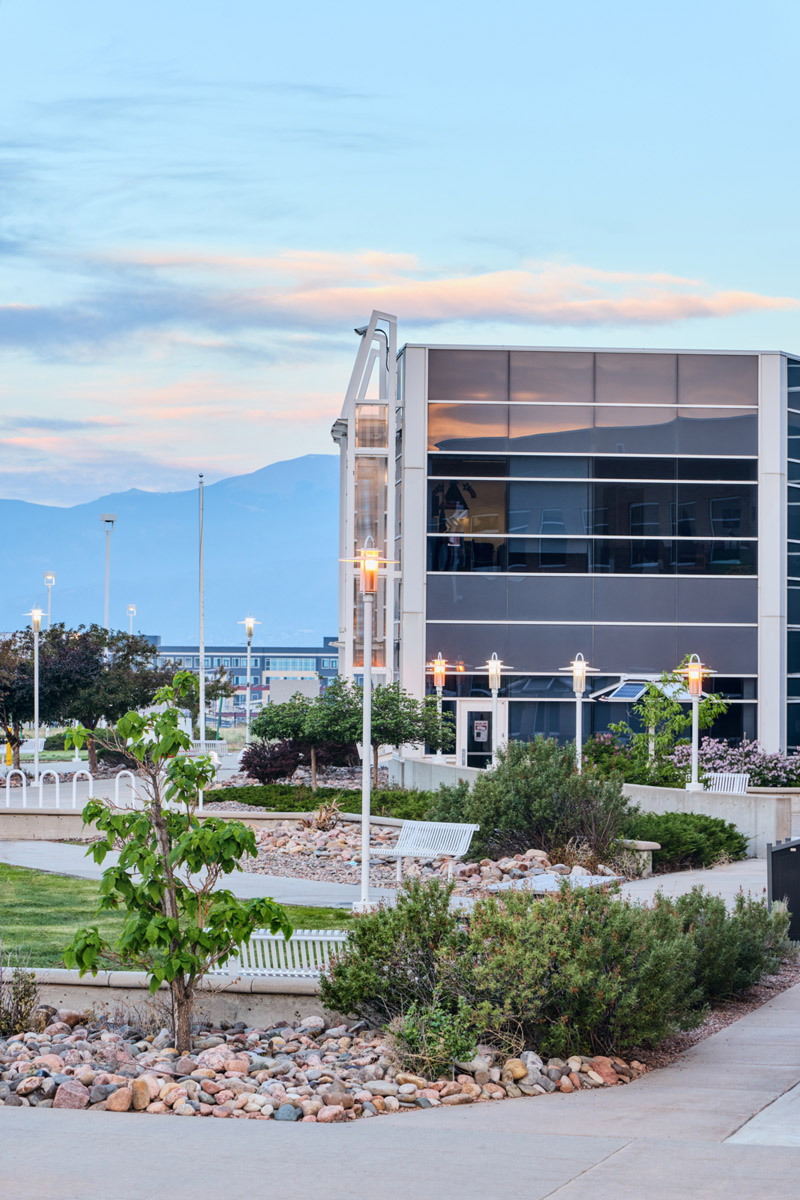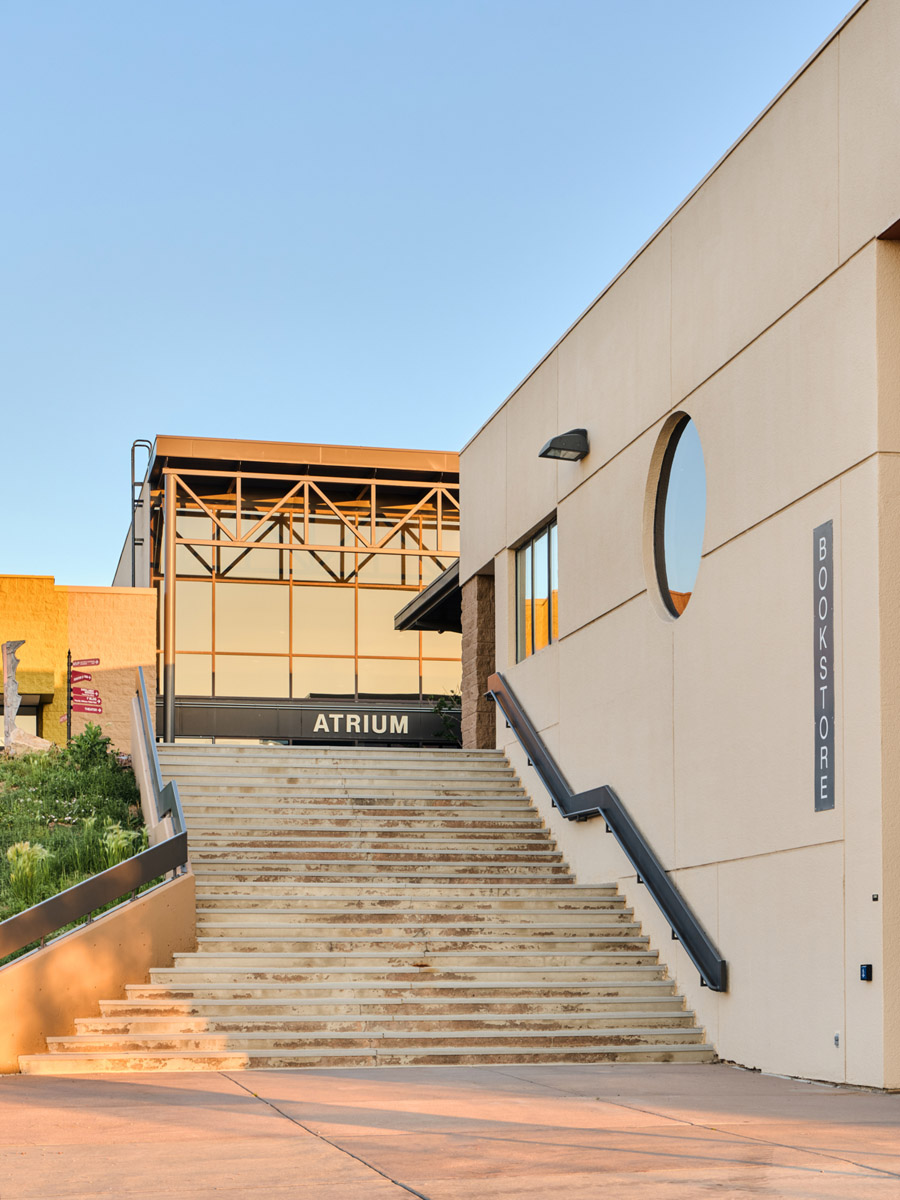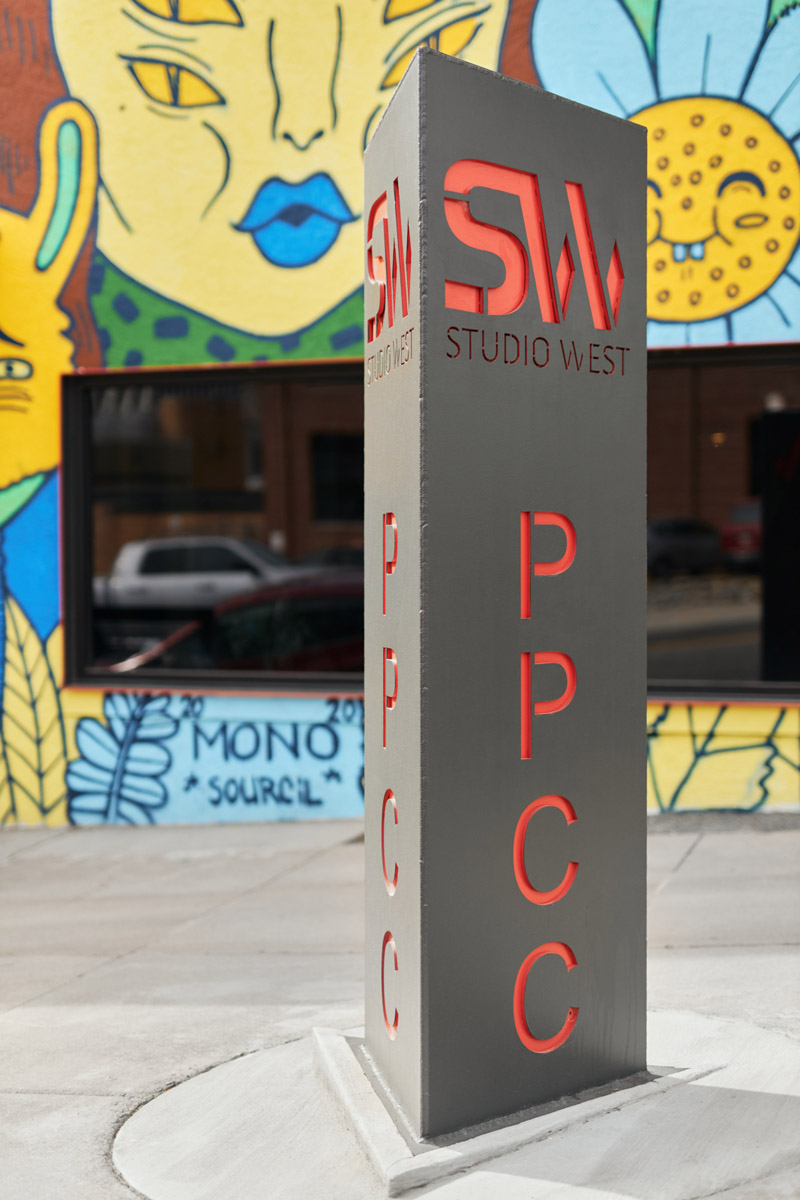
1961
Proposal
A state committee proposed 4 new “junior” (later known as community) colleges. They
included Colorado Springs as a location because of anticipated growth. They thought
the college should have exclusive entrance qualifications and exams.
1965
UCCS for transfer
Classes began at “Cragmor” (the original name of University of Colorado, Colorado
Springs). Planners thought a community college could provide it with transfer students.
1967-1969
Opening
El Paso County Community College was the original name, then EPCC. A founding administration
of the college included Robert O. Hatton (president), Donald Sieck (director of administrative
services), Frederick Struthers (director of general services/later dean of instruction),
Leonard Smith (director of vocational services), Frank Ross (director of student services),
Wilmer Newcomer (registrar), and Carol Van Lew (executive staff).
The nickname was “Safeway U” because one building was a former Safeway store at Robinson Street and 25th. This location was EPCC’s main site until 1976-8. The campus grew with new buildings there, named Colorado-style: Antero (old Safeway), Blanca (new classrooms); Culebra (new classrooms), Kenosha (new, auto repair), Raton (new, auto body/paint), Poncha (new, student union), Shavano (leased for administrative offices), Welding Laboratory (built for lease) Another campus was the Old Town Center at W. Colorado and 25th St.
Dedication/Graduation The dedication of the Administrative Offices (at 5 W. Las Vegas St.) was Wednesday, Nov. 20, 1968. Tuition was $60 per quarter full-time (10 hours) state residents and $250 per quarter for out of state. No student fees. Enrolled: 976 students. The first teacher was an automotive instructor. Stephen Redmond, the first president of the student government, was also the first commencement speaker. Graduation was in Bancroft Park: 17 associate’s degrees and 70 certificate students. Students were skeptical about spending money on a ceremony. Future Colorado Springs leaders Bill Hybl and John Suthers were among first instructors.
Mascot Selection
When the college proposed that EPCC have a mascot, sports teams, and school colors,
students scoffed because they were preoccupied with getting qualifications and jobs.
Therefore, they chose the aardvark (first in the dictionary), and black and blue (the
colors they thought they would earn in the sports fields).

1980-1985
Establishing Long Term Patterns
In 1980-1981, long-term funding developed with the creation of the PPCC Foundation,
a donation from the Holly Sugar Company, and an endowment from the George and Josephine
Lum Estate. The Colorado legislature also began funding the SBCCOE for distribution
to Colorado community colleges. PPSC approved graduation fees to offset the cost of
diplomas.
Tough Times
In 1980, a fired cosmetology instructor accused PPCC of racial discrimination. The
verdict was that, while there was not racial discrimination, there was a “pattern
of insensitivity to minority issues” at the college.
Technology Improvements/Relocation
A closed circuit TV system made it possible to produce TV programs for class use.
The Publications and Printing Office acquired the first word processing computer network
to serve the college. The technology rapidly improved. Soon PPCC was designated High
Tech Training Center for Microcomputers in Colorado. Military program offices moved
to Centennial Campus from off-site offices.
Leadership Change
In 1983-4, PPSC established the Curriculum and Instructional Practices (CIP) committee.
In 1984, declining enrollments threatened faculty salaries, and even staff cuts, again.
The PPCC Faculty Association opposed. President McInnis left his position for one
with the SBCCOES. Vice President Monique Amerman became acting president and thus
PPSC’s first woman president, temporarily.
1985-1986
New Systems for Growth
The Southern Colorado Educational Opportunity Center, designed to serve disadvantaged
students, opened at PPCC. The Miami-Yoder School District and the PPSC AVP department
initiated a unique program for high school seniors. They equipped a bus with a TV
and headsets to teach a PPSC communication class at a distance. In 1985, PPSC hired
a new president, Cecil Groves.
Downtown/Rampart Campus Utilization
In 1986, the Downtown Studio Campus opened for the Winter Quarter at 19 North Tejon.
Malcolm McCollum was assistant coordinator. PPCC began to use Rampart High School
evenings and weekends as a north campus, with Paul Doray (director of community services)
leading.
Network Improvement/Transfer Credits
In fall, 1986, PPCC began offering classes on a semester system. In 1986, PPCC raised
tuition to the highest of the 11 state community colleges. A new law required that
four-year colleges and universities facilitate the transfer of credits among state
institutions. This led to the “CORE” curriculum. Instructors began to record grades
and attendance via networked computers. A major scholarship endowment fund honored
of Amy Zlochower Smaldone, daughter of instructor Sol Zlochower.
1986-1989
Creation of a Police Academy
At the end of 1986, PPCC announced its new Pikes Peak Regional Law Enforcement Academy,
a training program created partly to fulfill a need expressed by El Paso County Sheriff
Bernard Barry. The program director was Al Bartok, Criminal Justice coordinator. Barry
was one of PPCC’s first graduates (1968-70), then its director of Public Safety until
1983 when he became sheriff. He founded the PPSC Alumni Association in 1987.
Diversity Issues
Patricia Traynor launched a project designed to increase the number of women in high
tech occupations. She received a $64,000 grant from federal vocational funds for the
project. In 1988, a Minorities Affairs Committee expressed discontent over employment
practices. Their survey report questioned progress in PPSC’s first 20 years.
The Twentieth Anniversary Festivities
PPCC’s 20th anniversary celebration included a Homecoming Dance, a dinner for new
employees, and special recognition during graduation.
Organizational Shift
In 1989, Cecil Groves left as president and Don Goodwin as vice president of instruction.
Dale Traylor was interim president. Marijane Paulsen became the first woman president
of PPCC. Thus, she became a local symbol of women in new positions of power. The North
Campus Task Force formed to make recommendations.

2008-2011
Rampart
In 2008, PPCC established a new relationship and brought new buildings to the Rampart
Range Campus, by introducing concurrent enrollment through The Classical Academy.
PPCC was still “military friendly” and appealing to “re-entry women,” but special
studies and programs began to address underrepresented minority males. Campus Life
director Colette Berge won the city’s Athena Award for helping women attend PPCC.
Presidential Transition
In 2010, Anthony Kinkel resigned. Vice president for instruction Edwin Ray became
interim president. In 2011, Lance Bolton became president.
2012-2016
Waldo Canyon/Black Forest Fires
The disastrous Waldo Canyon and Black Forest fires of 2012-2013 occasioned much community
involvement and affected many lives of the PPCC community.
Multicultural /Veteran center
In 2013, PPCC held its first Multicultural Awareness Conference for students to give
academic presentations. In 2014, PPCC presented a new veterans’ center and its Upward
Bound program was very successful. PPCC formed a Diversity Team and began online diversity
training in 2015
Creative Commons/Executive Director
In 2016, PPCC received the largest single monetary donation in its history, $1 million,
from the Marie Walsh Sharpe Foundation, to develop a Creative Commons for its art
students. In August of 2016, PPCC hired its first executive director of Diversity,
Equity, and Inclusion. That year also began the Global and Diversity Studies Program.
2017-2018
2017-2018 Achievements/Future
Highlights of 2017-2018 include a new Cybersecurity degree program; bus service returning
to Rampart Campus after years without; several major food distribution programs to
help those in need; and PPCC’s first Bachelor’s degree, a Bachelor of Applied Science
degree in Emergency Services Administration, with a Bachelor of Science in Nursing
to come